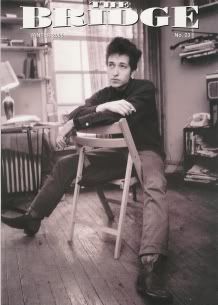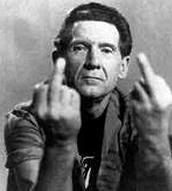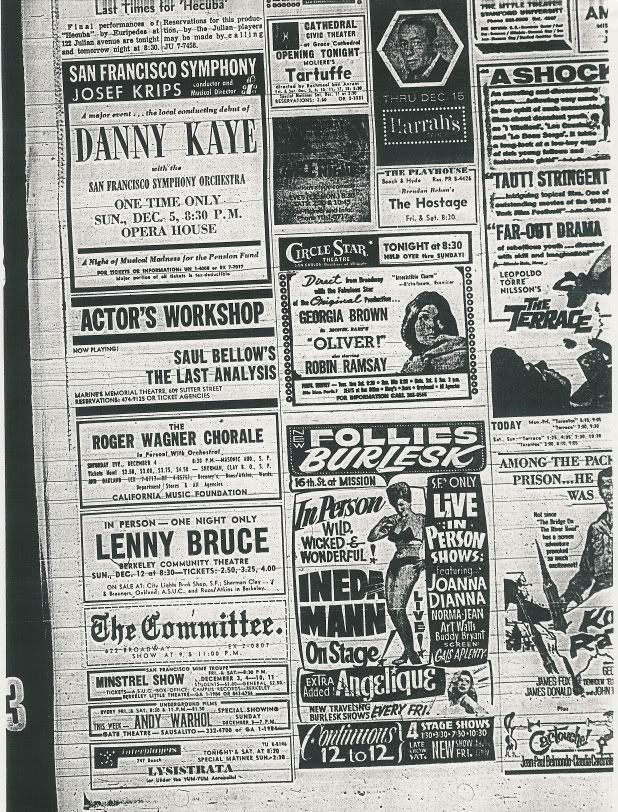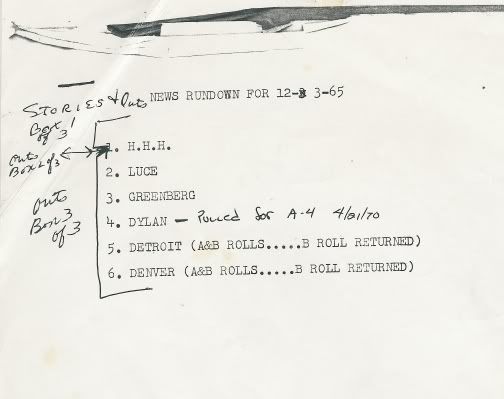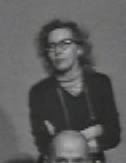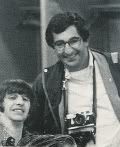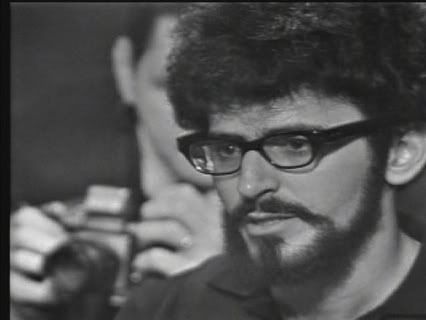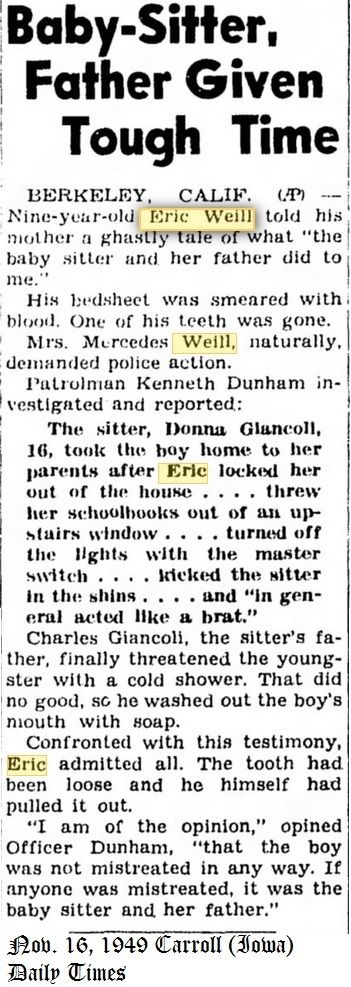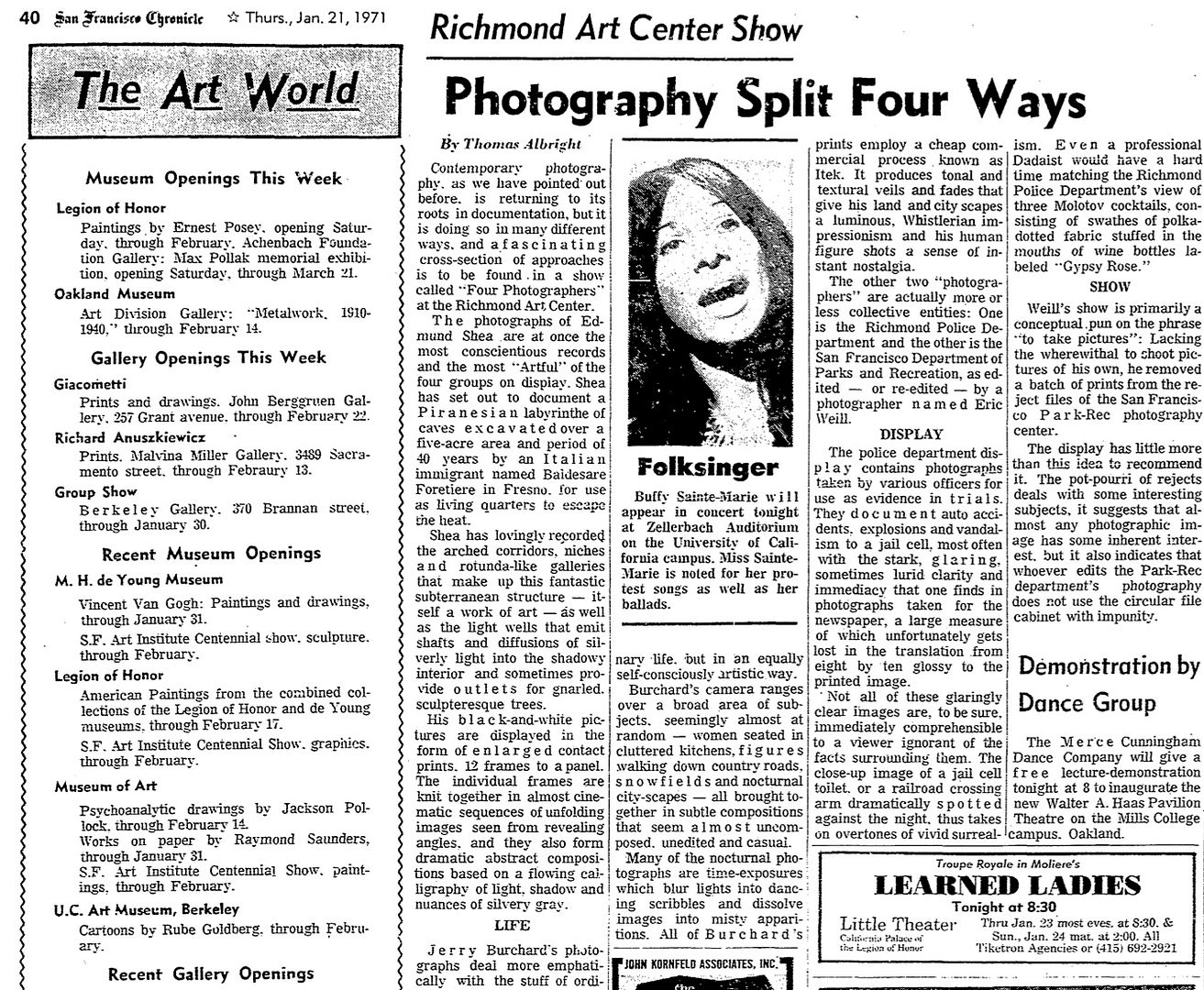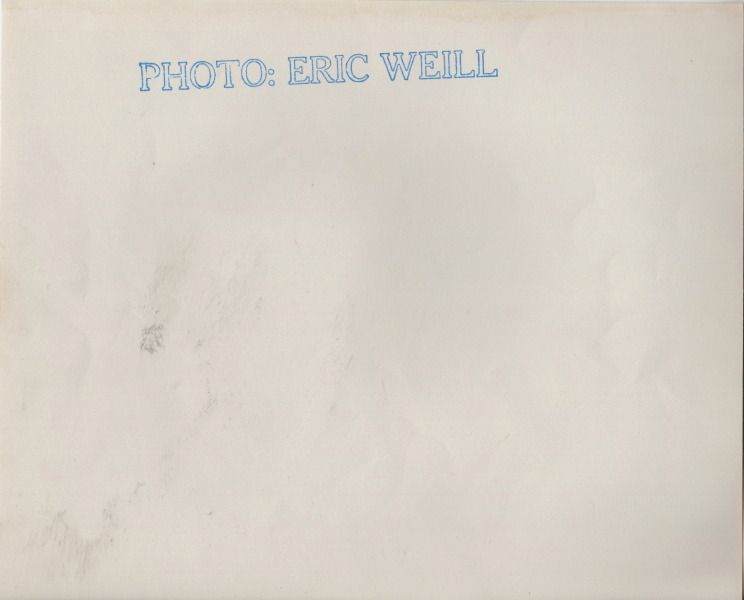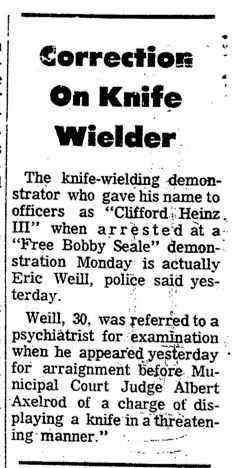Post by cripes on Aug 31, 2007 1:33:48 GMT -5

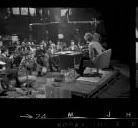
Bob Dylan's 1965 San Francisco Press Conference--A Closer Look
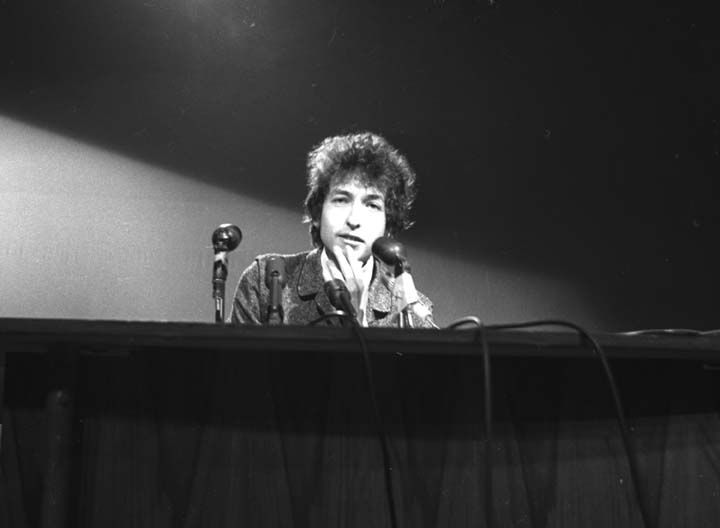
In December of 1965 Bob Dylan met with the Bay Area press at KQED studios at 4th and Bryant Street in the south of Market area of San Francisco. KQED was a trailblazing Public Educational TV station that started broadcasting in 1954.
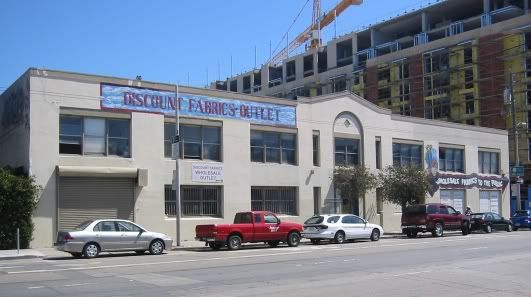
525 4th St in 2005. Originally a truck warehouse, in 1956 KQED moved in and rented the space for $500 a month, with many donations of furnishings, equipment, lumber, and egg cartons for soundproofing (KQED originated this cost-efficient idea - since copied worldwide). A sign was hung in the bathroom that said 'Don't flush during broadcast'
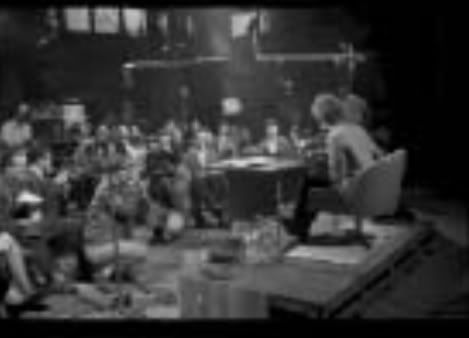
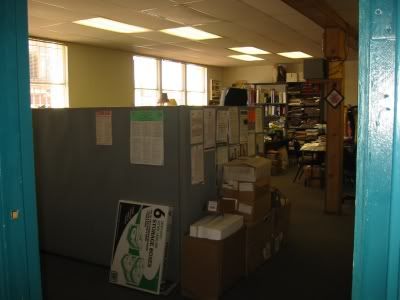
Inside KQED--1965 and 2005
At 1:00 PM on Friday December 3rd 1965 Bob met the press to promote his 5 Bay Area shows. Dylan fans can thank Ralph Gleason for preserving on video the entirety of the broadcast. Gleason's association with KQED dated back to 1963. He produced a music show Jazz Casual which featured many of the top jazz artists of the day.
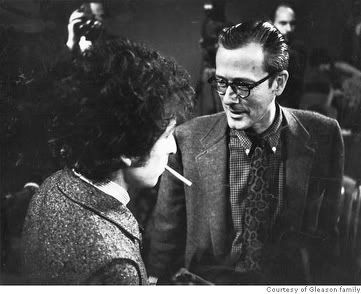
Ralph Gleason wrote in 1973:
When Bob Dylan's five concerts in the San Francisco Bay Area were scheduled in December 1965, the idea was proposed that he hold a press conference in the studios of KQED, the educational television station.
Dylan accepted and flew out a day early to make it.
He arrived early for the press conference accompanied by Robbie Robertson and several other members of his band, drank tea in the KQED office and insisted that he was ready to talk about "anything you want to talk about." His only request was that he be able to leave at 3 PM so that he could rehearse in the Berkeley Community Theater where he was to sing that night.
At the conclusion of the press conference, he chatted with friends for a while, jumped into a car and went back to Berkeley for the rehearsal. He cut the rehearsal off early to go to the hotel and watch the TV program which was shown that night and repeated the following week.
This is the only full length press conference by Dylan ever televised in it's entirety.

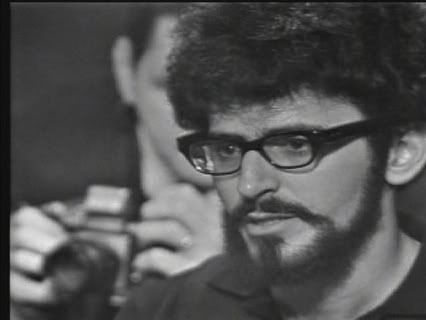
"I'd like to know the meaning of the cover photo on your album...Highway 61."
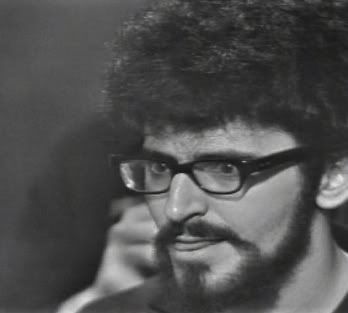
"I've thought about it a great deal."
Bay Area photographer Eric Weill asks the first question of the day.
Here is the one shot Eric took of Bob that survives:
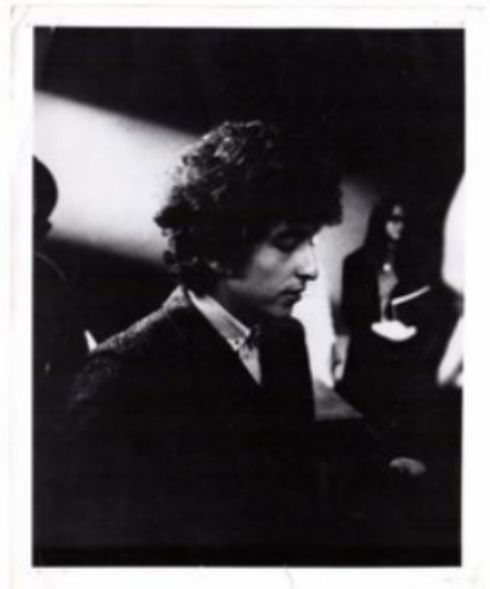
This was made into a poster and sold in Bay Area shops.
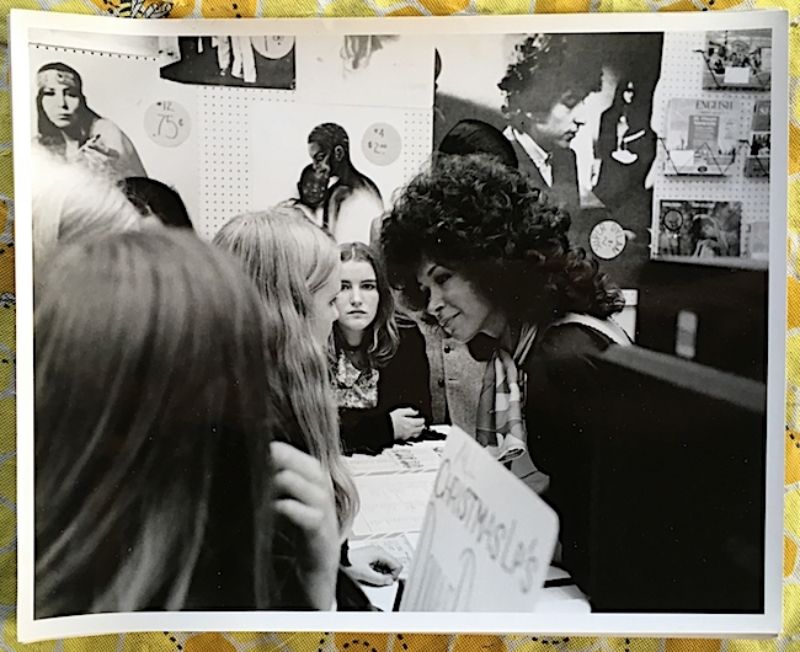
Eric also photographed The Rolling Stones at the SF Civic Auditorium and The Beatles last concert at Candlestick Park, and was active in the late sixties protest movement.
Unfortunately, he suffered from a bipolar disorder which had him in and out of jail and mental hospitals.
In October 1969, it is claimed that Eric called into a TV talk show claiming to be the Zodiac killer. Apparently the call was traced to a Napa State Hospital where Eric was staying. Whether it was Eric that called or someone else is up for grabs. Below is an excerpt from the call. It doesn’t sound like the same guy to me, but it’s hard to tell.
youtu.be/llrfcrT9Cds
In 1970 he was arrested at a Free Bobby Seale rally where he threatened TV photographers with a knife and claimed (falsely) to be carrying a stick of dynamite.
For a while he changed his name to Abraham Lincoln IV and wandered the streets of Berkeley wearing a stovepipe hat.
In 1980 he was arrested for vandalizing a Richard Avedon photograph of Andy Warhol.
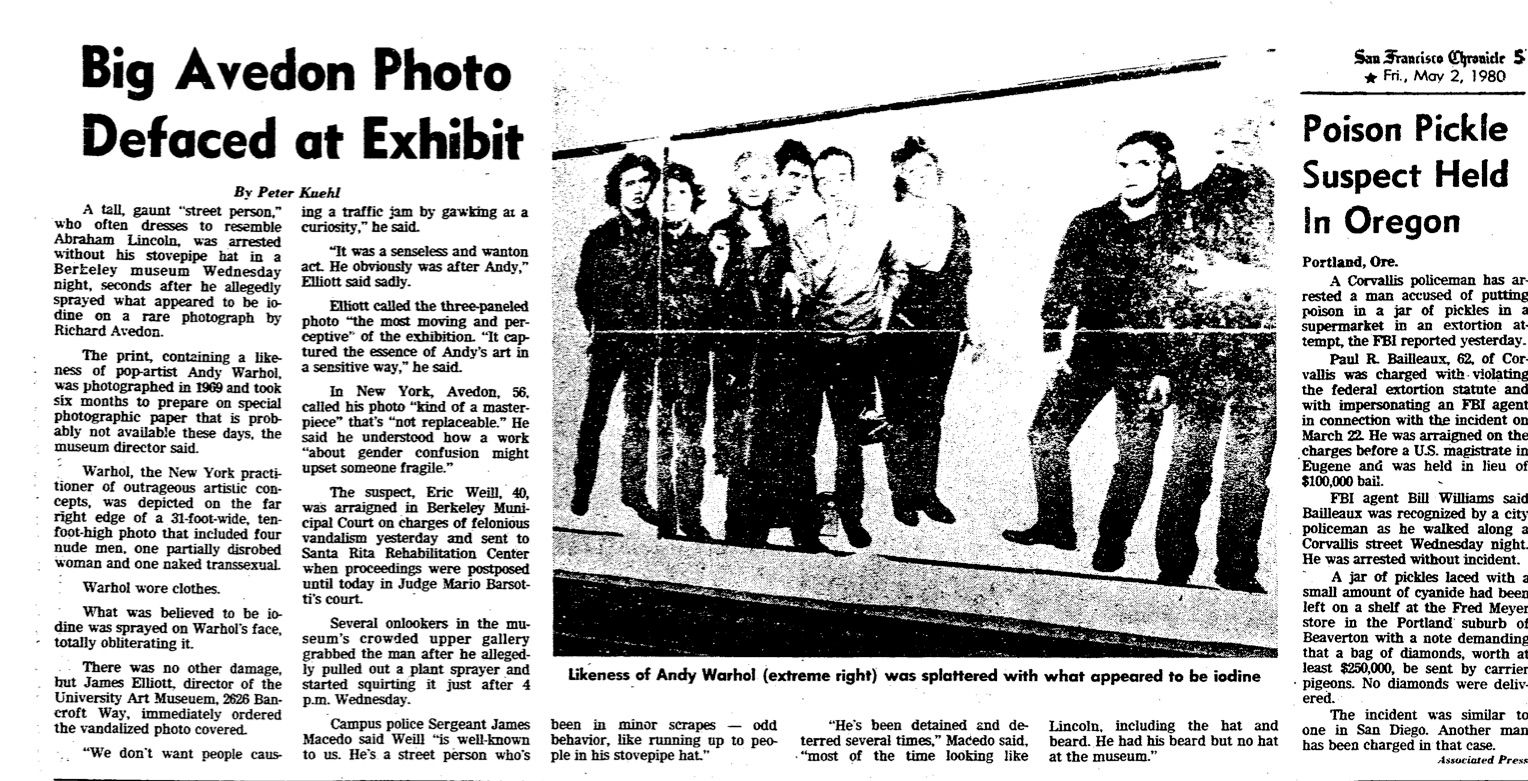
He lived his last years in a 1930’s milk truck. All of his photo negatives are believed to be lost.
He died by his own hand in 2006.


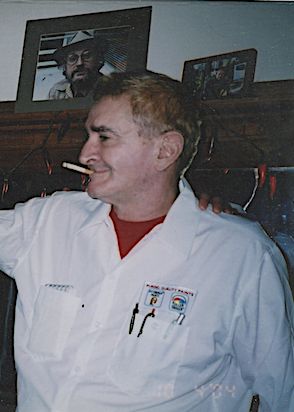
Eric in 2009.
I need to give credit where it’s due here. There’s an Eric Weill thread on a Zodiac killer website started by ophion1031 (Chad) right here:
zodiackiller.forumotion.com/t44-eric-weill
that I got much of my info from. Many thanks to Chad.
There was a recently published story about Eric’s Beatles at Candlestick Park photos that can be found here:
www.collectorsweekly.com/articles/garage-sale-find-of-rare-beatles-photos/
Some great detective work by Ben Marks there—a big thanks and hats off to Ben.
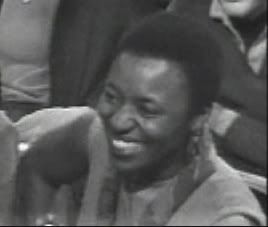
Mary Ann Pollar produced many folk concerts in the Bay Area in the early '60s, including Bob's. At the tail end of the press conference video you can hear her say "Everyone wants to know 'where's the party?'." The after show party was actually held at Mary Ann's house on Shattuck Avenue in Berkeley. Pollar fondly remembered that Bob Neuwirth worked the door keeping out the undesirables. She died in 1999.
A short bio of Mary Ann Pollar assembled at the time of her passing:
Born May 23, 1927 in Texas; died in Oakland, CA September 11, 1999.
Childhood: Mission, Texas, moved to Chicago, Illinois during her early teens.
Moved to California in 1950, worked for Bay Area Urban League.
Married to Henry A. Pollar, 1953.
Daughter: Odette Pollar
During the early 1950’s she began producing folk music concerts, in small club-venues, and larger auditoriums. Early artists included Odetta, Sonny Terry and Brownie McGhee, and Rolf Cahn. She later incorporated and operated Mary Ann Pollar Presents, promoting Rock, Folk, and Jazz performers through the early ‘80s. A partial list of artists, many of whom were first introduced to West Coast and/or Bay Area audiences by MAPP, included:
· Bob Dylan
· Joan Baez
· Theodore Bikel
· The Clancy Brothers and Tommy Makem
· Judy Collins
· The Fugs
· Arlo Guthrie
· Richie Havens
· Curtis Mayfield
· Modern Jazz Quartet
· Nana Mouskouri
· The Persuasions
· Peter, Paul and Mary
· Peggy Seeger and Ewan MacColl
· Pete Seeger
· Simon and Garfunkel
· Buffy St. Marie
· Nina Simone
· The Weavers
· Frank Zappa and The Mothers of Invention

In 1971 Mary Ann Pollar founded Rainbow Sign, a black arts and cultural center, in Berkeley, California. Art exhibits by Elizabeth Catlett, Romare Beardon, Dewey Crumpler, and Irene Clark were held there, as well as many community cultural events. Performers presented at Rainbow Sign included Maya Angelou, Abbey Lincoln, John Handy, Taj Mahal, Odetta, Les Ballets Africains, The Art Ensemble of Chicago, poet Eugene Redmond, and many others.
Shirley Chisolm appeared at Rainbow Sign during her campaign for the U.S. Presidency. James Baldwin, David DuBois, and U.S. Senator Ronald Dellums were frequent visitors to the club, as were countless other African-American celebrities from across the country and around the world. The club’s restaurant and bar were a notable meeting place for community members and visitors during Rainbow Sign’s seven years of operation.
In 1978 Mrs. Pollar began yet another career working at AC Transit. Her tenure there was marked by the organization of a new union local for management employees, AFSCME Local 3916. She was elected as its first president and served with distinction. She retired from AC Transit in early 1999, shortly after the death of her husband, Henry A. Pollar.
During her concert promoting career, the after-concert parties held at her home on Racine Street and later on Lakeshore Avenue were legendary. Also during those years and until quite recently, the annual New Year’s Eve parties hosted by the Pollars were attended with great regularity by many close friends and acquaintances from far and wide. Her circle of friends was remarkable including people throughout the United States and around the globe. Many of their children still regard her as a second mother, as her heart seemed to grow to include all of them.
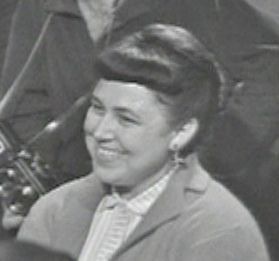
Sitting next to Mary Ann Pollar was Lorie Saxon a long-time friend who often wrote press releases for the concerts that Mary Ann produced.
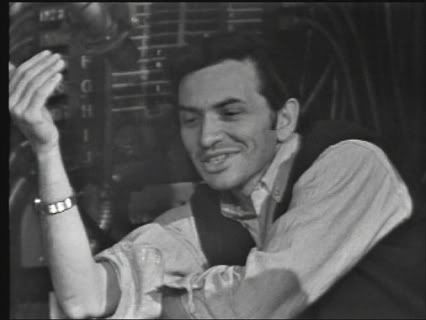
Up and coming promoter Bill Graham was there as well. He even managed to get Bob to plug an upcoming Mime Troupe benefit show at The Fillmore.


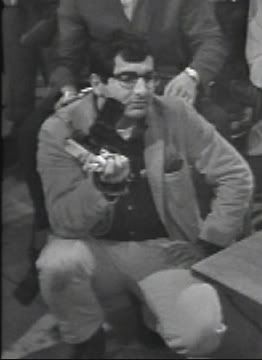
If something was ever happening, photographer Jim Marshall was there. His body of work is unsurpassed.
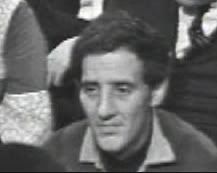
Gary Goodrow was a founding member of the comedy improv troupe The Committee.
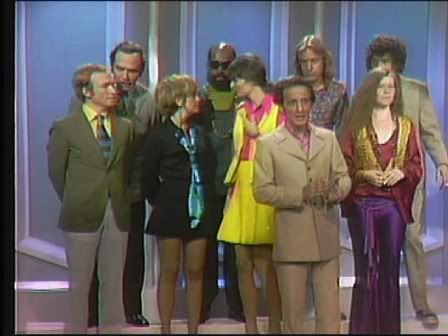
Gary Goodrow and The Committee on The Dick Cavett Show July 1969
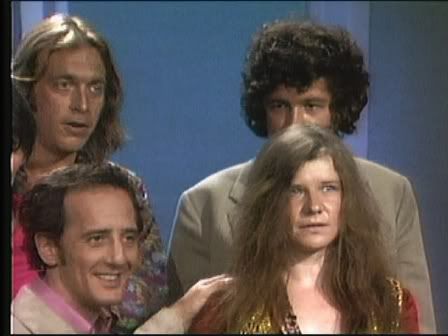
Goodrow with Janis Joplin and Committee member Howard Hesseman
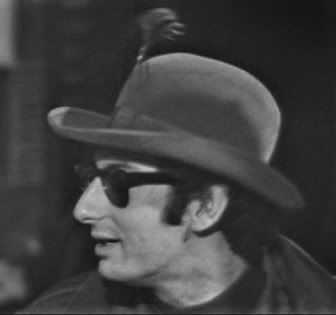
Another Commitee member in attendance was Larry Hankin. Most will recognize Hankin as the the actor who played Kramer in the Seinfeld "Making the Pilot" episodes. He remains a popular character actor with an impressive list of film credits.
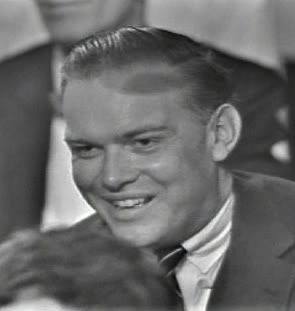
Rollin Post was working for KPIX/CBS channel 5 at the time. He went on to become one of the Bay Area's premier political commentators until his retirement in 1999.
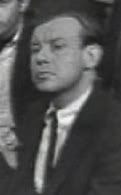
Phil Elwood was the jazz critic for the San Francisco Examiner (and later the Chronicle) for more than 35 years. He died in 2006. He wrote this at the time:
Bob Dylan's Concert--Provocative, Rewarding
By Philip Elwood
It was a hard day's night for Bob Dylan at his Berkeley concert last evening. But by it's conclusion he had fought off apparent boredom (his own and, surprisingly the audience's) and emerged victorious as he sang a whole set of his recent material accompanied by a predominantly electronic rhythm quintet.
"Concerts are a kick," Dylan had said during his enervating afternoon press conference, "but the albums are more important: they're more concise and the words are easier to hear."
By the intermission last night, Dylan's opening 45 minutes (in solo) had left much of the crowd in agreement. They had expected some of the kicks and what they got most frequently, was spiritless and often incomprehensible mediocre Dylan.
But Dylan came roaring back after the break, and with his rocking band laying down a vibrating gospel beat, he shouted out the typically catatrophic words to "Just Like Tom Thumb's Blues": the audience stirred, shouted and stomped, Dylan beamed, and the show took off.
No matter how many versions of his familiar standards ("Like a Rolling Stone," "It Ain't Me Babe," etc.) one heard, Dylan's wholly original renditions are always more interesting, forceful, and lasting.
"You know something is happening here but you don't know what it is, do you Mr. Jones," goes "Ballad of a Thin Man." Ironically, at the press conference Dylan had explained away his own astonishing popularity as "just a happening, I guess."
But if hundreds of adult Mr. Joneses in the Berkeley concert audience are baffled by "the happening," there are thousands of the under-thirties (Dylan still has six years to go) to whom Bob Dylan is a symbol of bitter-sweet criticism of the artificialities found in contemporary society.
Dylan is disarmingly honest, almost consistently dour and his songs seldom achieve any full unity of concept.
Like a jigsaw puzzle, many of the separate parts, and occasionally some of the combined pieces, are fascinating and obviously the product of a talented craftsman in imagery. But on none of Dylan's compositions is a full picture ever completed.
Dylan's songs are as unclassifiable as the costumes of his most devoted young admirers because uniformity and conformity are the antithesis of this restless and cynical generation's philosophy.
He doesn't really sing much either. It's mostly a shouting, wailing narrative, and his blank verse lyrics are as irregular as the charts and meters.
It isn't emotionally or physically easy to attend a Dylan concert but it's provocative and rewarding in a degree seldom found elsewhere in American artistic expression. Four more Bay Area concerts are scheduled for this week and next.
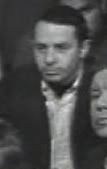
Robert Shelton should be familiar to all reading this. He wrote what many consider to be the definitive biography of Bob in the sixties No Direction Home in which he chronicles Bob's 1965 Bay Area visit in some detail
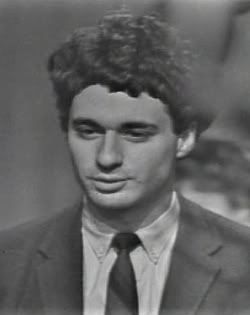
Jonathan Cott was a writer for Ramparts magazine at the time. Ralph Gleason was the editor of Ramparts, so he invited Mr. Cott to tag along. Cott went on to be a longtime contributing editor for Rolling Stone. Cott also interviewed Dylan extensively in Rolling Stone when Bob was talking up Renaldo & Clara in 1977.

Lisa Hobbs turned in this article for the Examiner:
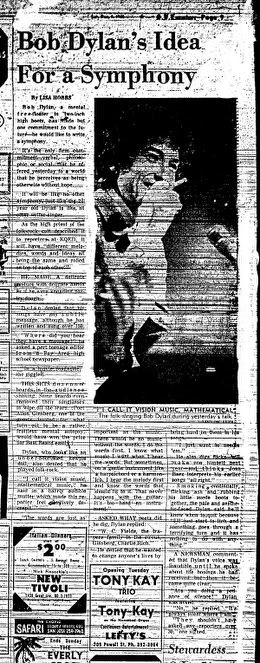
Bob Dylan's Idea For a Symphony
by Lisa Hobbs
Bob Dylan, a mental free-floater in two-inch high boots, has made but one commitment to the future--he would like to write a symphony.
It's the only firm commitment verbal, philosophic, or social that he offered yesterday to a world that he perceives as being otherwise without hope.
It will be like no other symphony, just like the 24 year old Dylan is like no other writer-singer.
As the high priest of the folk-rock cult described it to reporters at KQED, it will have "different melodies, words and ideas all being the same and rolled on top of each other".
He made a delicate gesture with delicate hands as if he were kneading pastry dough.
Dylan denied that his songs have any subtle message, although he has written and sung over 150.
"Where did you hear they have a message?" he asked a pert teenage editor from a Bay Area high school newspaper.
"In a movie magazine" she giggled.
This sets dozens of beards in the audience shaking. Some beards even removed their sunglasses to wipe off the tears. (Poet Allen Ginsberg, one of the guests invited for what turn out to be a rather fruitless mental autopsy, would have won the prize for Best Beard easlly.)
Dylan, who looks like an under-nourished kewpie doll, also denied that he played folk-rock.
"I call it vision music, mathematical music," he said in a barely audible mutter which made this reporter feel positively decrepit.
"The words are just as important as the music. There would be no music without the words. I do the words first. I know what music I want when I hear the words. But sometimes on a gentle instrument like a harpsichord or a harmonica, I hear the melody first and know the words that should fit to it. That never happens with the guitar. It's too hard an instrument."
Asked what poets did he dig, Dylan replied:
"W.C. Fields, the trapeze family in the circus, Ginsburg, Charlie Rich."
He denied that he wanted to change anyone's lives by being hard on them in his songs.
"I just want to needle 'em."
He also digs flicks----will make one himself next year and thinks Joan Baez interprets his earlier songs "all right."
Smoking continually, flicking ash and rubbing his little suede boots together, the pale and aesthetic-faced Dylan said he'll know when to quit because "I'll just start to itch and something goes through a terrifying turn and it has nothing to do with anything."
A newsman commented that Dylan's voice was inaudible until he spoke about the booings he had received but then it became quite clear.
"Are you doing a pennance of silence?" Dylan was asked.
"No," he replied. "It's always silent where I am."
"They shouldn't have asked any reporters over 30," one sighed.
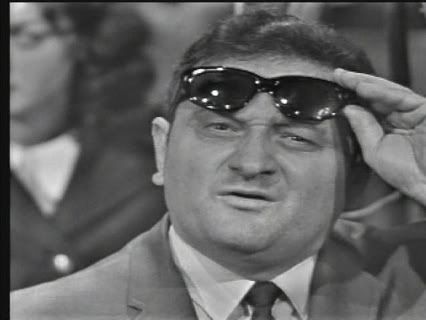
Michael Grieg wrote for the Chronicle:
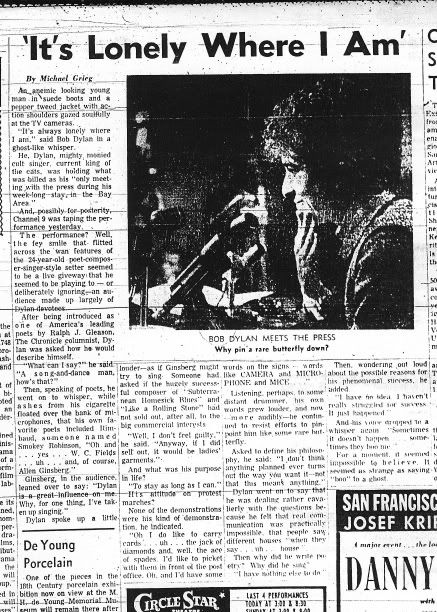
'It's Lonely Where I Am'
By Michael Grieg
An anemic looking young man in suede boots and a pepper tweed jacket with action shoulders gazed soulfully at the TV cameras.
"It's always lonely where I am," said Bob Dylan in a ghost-like whisper.
He, Dylan, mighty monied cult singer, current king of the cats, was holding what was billed as his "only meeting with the press during his week-long stay in the Bay Area."
And, possibly for posterity, Channel 9 was taping the performance yesterday.
The performance? Well, the fey smile that flitted across the wan features of the 24 year old poet-composer-singer-style setter seemed to be a live giveway that he seemed to be playing to-or deliberately ignoring--an audience made up largely Dylan devotees.
After being introduced as one of America's leading poets by Ralph J. Gleason, The Chronicle columnist, Dylan was asked how he would describe himself.
"What can I say?" he said. "A song-and-dance man, how's that?"
Then, speaking of poets, he went on to whisper, while ashes from his cigarette floated over the bank of microphones, that his own favorite poets included Rimbaud, someone named Smokey Robinson, "Oh and...yes...W.C. Fields...uh...and, of course, Allen Ginsberg."
Ginsberg, in the audience, leaned over to say: "Dylan is a great influence on me. Why, for one thing, I've taken up singing."
Dylan spoke up a little louder--as if Ginsberg might try to sing. Someone had asked if the hugely successful composer of "Subterranean Homesick Blues" and "Like a Rolling Stone" had not sold out, after all, to the big commercial interests.
"Well, I don't feel guilty," he said. Anyway, if I did sell out, it would be ladies' garments."
And what was his purpose in life?
"To stay as long as I can."
His attitude on protest marches?
None of the demonstrations were his kind of demonstration he indicated.
"Oh I do like to carry cards...uh...the jack of diamonds and, well, the ace of spades. I'd like to picket with them in front of the post office. Oh, and I'd have some words on the signs--words like CAMERA and MICROPHONE and MICE..."
Listening, perhaps, to some distant drummer, his own words grew louder, and now--more audibly--he continued to resist efforts to pinpoint him like some rare butterfly.
Asked to define his philosophy, he said: "I don't think anything planned ever turns out the way you want it--not that this means anything."
Dylan went on to say that he was dealing rather cavalierly with the questions because he felt that real communication was practically impossibe, that people saw different houses "when they say...uh...house."
"Then why did he write poetry? Why did he sing?"
"I have nothing else to do."
Then, wondering out loud about the possible reasons for his phenomenal success, he added,
"I have no idea. I haven't really struggled for success. It just happened."
And his voice dropped to a whisper again. "Sometimes it doesn't happen...sometimes they boo me."
For a moment, it seemed impossible to believe. It seemed as strange as saying "boo" to a ghost.
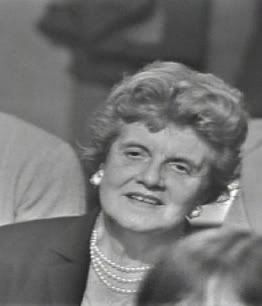
Elsa Knight Thompson was a leading progressive journalist and a pioneer for women in broadcasting who spent a large part of her career as a Public Affairs Director at KPFA and was active in other Bay Area political and community efforts
Five junior year students from Redwood High School in Larkspur in Marin County:

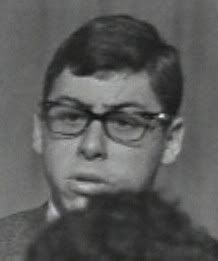
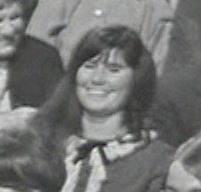
Michelle Basil, David Greenfield & Wendy Wayne
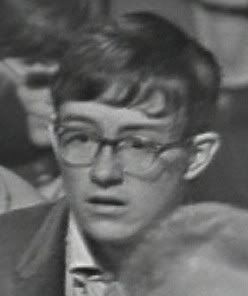
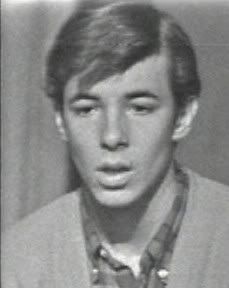
John Campbell and Henry Farre
Michelle Basil (who coaxed Dylan into one of his few genuine laughs of the conference with her 'movie magazine' reply) had directly contacted Bob's manager Albert Grossman for a press pass into the conference. The journalism students were on the school's 'Student News Bureau'.
Other notable alumni from Redwood High include comedian Robin Williams and current San Francisco governor Gavin Newsom.
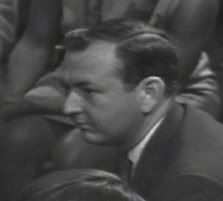
KGO 7 news anchor Jerry Jensen 1934-1984
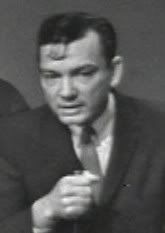
KTVU broadcaster Claude Mann

Robert N. Zagone was in charge of the 2 cameras KQED used to film the press conference. Being as he was in the control room, you can't see him at the conference. Click his name to see his wiki page and numerous film accomplishments.
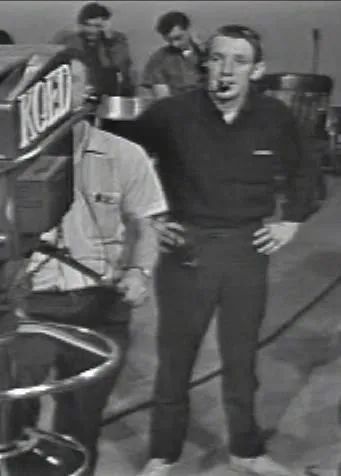
KQED floorman Mark Meunter.

Dick Schiller had been working for KQED for only a month before being called upon to keep camera #2 on Bob. Mr. Schiller still works for KQED.
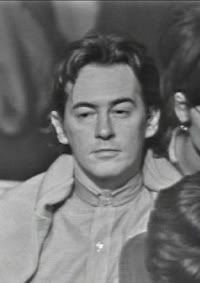
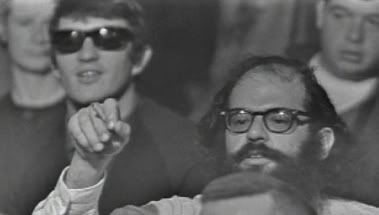
Poets Michael McClure and Allen Ginsberg (is that Rick Danko behind Allen?) were never far from Dylan's entourage during his Bay Area visit

Jean Gleason (1918-2009) and poet Lawrence Ferlinghetti

Bob Neuwirth keeps a low profile in the back of the room.

The press conference was rebroadcast the following Thursday.
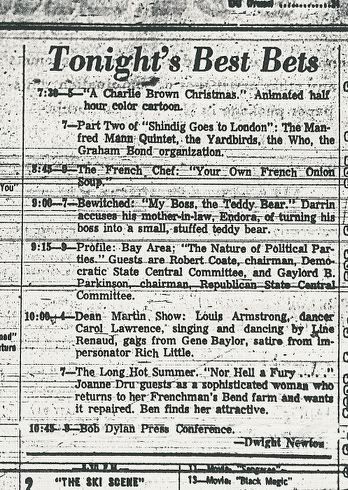


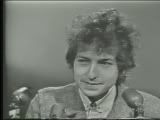
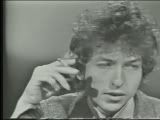
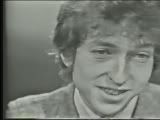
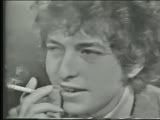

On New Years Eve in 1979 KQED showed the Bob Dylan 1965 press conference once again. Dubs from that broadcast circulated among Dylan fans for many years.
The San Francisco press conference finally saw proper DVD release on October 31, 2006.

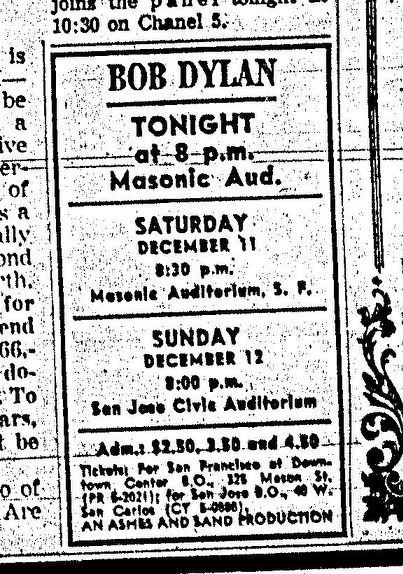
©2005 Blair Miller (revised 2015)
Thanks to Mary Ann Pollar, Michael Dorn, Jim Marshall, Rollin Post, Toby Gleason, Kevin Jackson, Jim D., Lou Leary, Stephen Saxon, Jon Schiller, Robert Zagone & Jonathan Cott for their assistance. Photos ©iconpix
If you were at the press conference or know the names of anyone not mentioned here, please contact me at blairamiller1@gmail.com
This article first appeared in The Bridge #23
